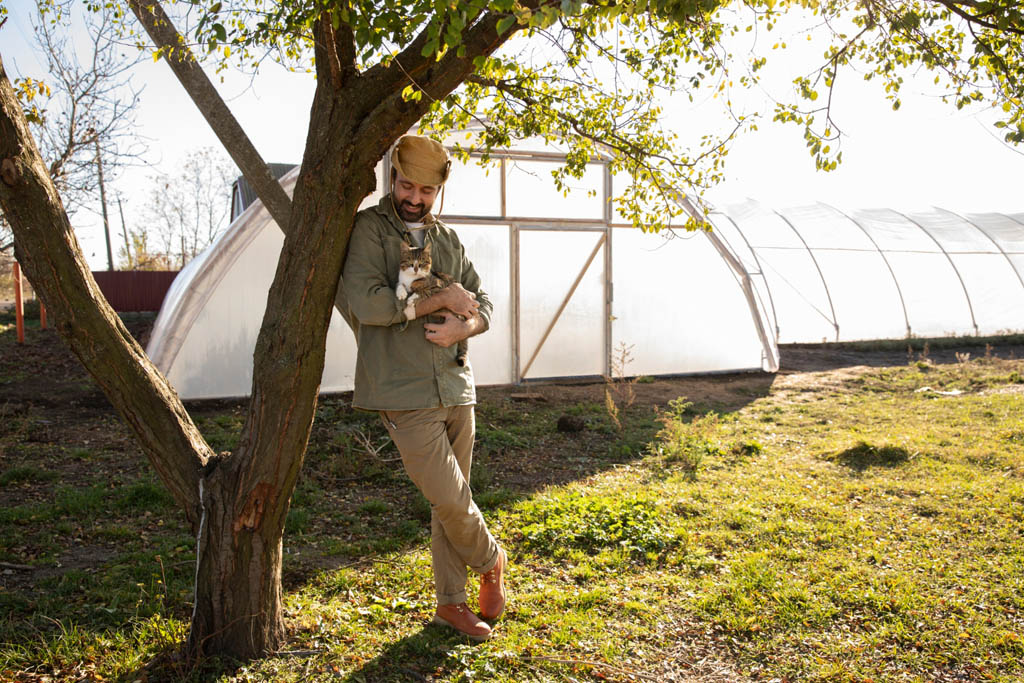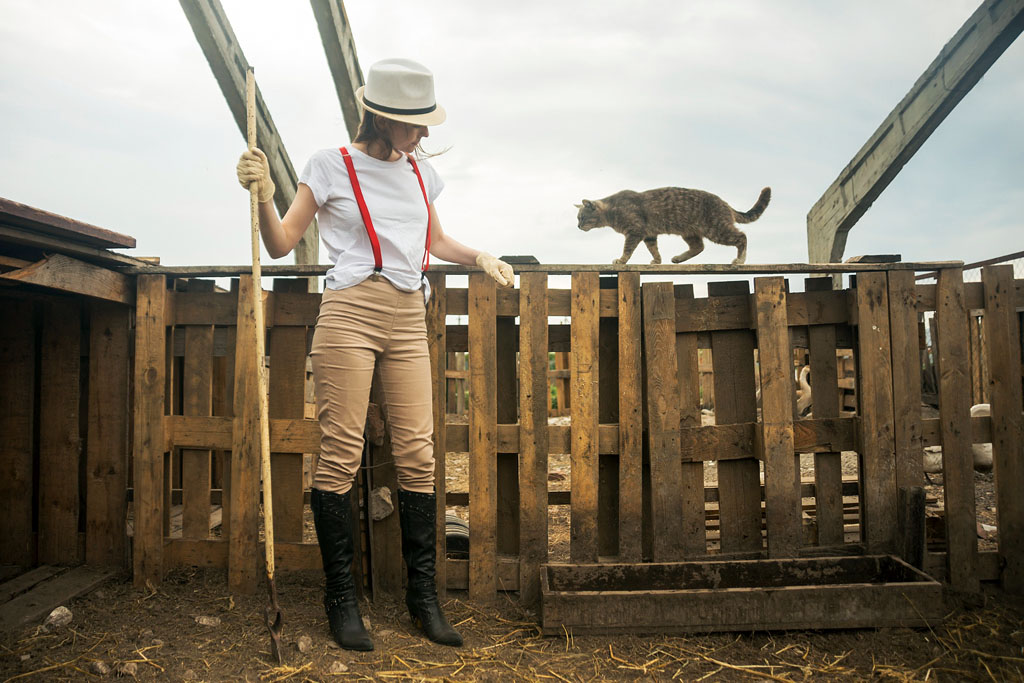Are you tired of the hustle and bustle of city life, yearning for a simpler, more self-sustainable existence? If so, you’re not alone. Homesteading, a lifestyle that has gained popularity in recent years, offers a path toward a fulfilling and sustainable way of living. In this article, we will explore what homesteading is and how it can transform your life.
Homesteading is about embracing self-sufficiency, sustainability, and a closer connection to the land. It involves growing your food, raising animals, and utilizing renewable resources to decrease reliance on external systems. By implementing practices such as organic gardening, rainwater harvesting, and harnessing solar energy, homesteaders strive to live more harmoniously with nature.
This journey towards sustainable living often starts with small steps. From planting your first vegetable garden to learning basic carpentry skills, every effort contributes to a more self-reliant lifestyle. While homesteading requires hard work and dedication, the rewards are immeasurable. Not only can it reduce your ecological footprint, but it also offers a sense of fulfillment, peace, and a deeper connection to the natural world.
Join us on this exploration of homesteading and discover how this timeless way of life can bring you closer to nature, community, and a more sustainable future.
The history of homesteading
Homesteading has deep roots in American history. In the 19th century, the Homestead Act of 1862 provided free land to settlers who were willing to develop and improve it. This act sparked a movement of people seeking a fresh start and a chance to build a life on their own terms. While the Homestead Act is no longer in effect, the spirit of self-sufficiency and independence lives on in modern homesteading.
Benefits of homesteading
Homesteading offers a myriad of benefits, both for individuals and the environment. By growing your food, you have complete control over what you eat, ensuring that it is organic and free from harmful chemicals. This not only promotes better health but also reduces your reliance on industrial agriculture, which often relies on synthetic fertilizers and pesticides.
In addition to the health benefits, homesteading reduces your ecological footprint. By utilizing renewable resources such as solar energy and rainwater harvesting, you can decrease your reliance on fossil fuels and conserve water. Homesteading also encourages a simpler lifestyle, focused on quality rather than quantity, which can lead to a greater sense of fulfillment and contentment.
The essentials – land, shelter, and water
To embark on a homesteading journey, you’ll need to secure a piece of land. Whether you choose to purchase or rent, it’s important to consider factors such as soil quality, water availability, and zoning regulations. Once you have your land, the next step is to establish a shelter that suits your needs. This could range from a tiny house or a yurt to a traditional farmhouse. The key is to create a space that is functional, comfortable, and sustainable.
Water is another essential element of homesteading. Depending on your location, you may have access to a well, a nearby stream, or the option to collect rainwater. It’s crucial to have a reliable and sustainable water source for all your homesteading needs, including drinking, cooking, and irrigation.
Homesteading skills – gardening, animal husbandry, and food preservation
Homesteading requires a range of practical skills to become self-reliant. One of the most fundamental skills is gardening. By growing your fruits, vegetables, and herbs, you can ensure a fresh and healthy food supply. Organic gardening techniques, such as companion planting and crop rotation, can help maximize yields and minimize pest damage. Learning about soil composition, seed saving, and composting is also essential for successful homesteading.

Animal husbandry is another important skill for homesteaders. Raising livestock such as chickens, goats, or rabbits can provide a valuable source of meat, milk, eggs, and fiber. Proper animal care, including shelter, feeding, and health management, is crucial for the well-being of your animals and the success of your homestead.
Food preservation is a key aspect of homesteading, allowing you to enjoy the abundance of your harvest year-round. Techniques such as canning, fermenting, dehydrating, and freezing can help preserve the flavors and nutrients of your homegrown produce. By mastering these skills, you can reduce food waste and ensure a sustainable food supply throughout the year.
Homesteading for beginners – getting started
Embarking on a homesteading journey can be overwhelming, especially for beginners. The key is to start small and gradually expand your skills and resources. Begin by setting realistic goals and focusing on one area at a time. Start with a small vegetable garden or a few backyard chickens, and as you gain confidence and experience, you can take on more ambitious projects.
It’s also important to educate yourself through books, online resources, and local workshops. Connect with experienced homesteaders who can offer guidance and support. Joining homesteading communities and attending local farmers’ markets or agricultural fairs can provide valuable networking opportunities and a sense of community.
Challenges and how to overcome them
While homesteading is a rewarding lifestyle, it does come with its fair share of challenges. One of the biggest hurdles is the physical demands of working the land. Homesteading requires hard work, often involving long hours and manual labor. It’s important to pace yourself, listen to your body, and take breaks when needed.

Another challenge is adapting to the unpredictable nature of farming and gardening. Weather conditions, pests, and diseases can all impact your homesteading efforts. Building resilience and flexibility in your approach is key to overcoming these challenges. Learning from failures, experimenting with different techniques, and seeking advice from experienced homesteaders can help you navigate these obstacles.
Resources and communities
The homesteading community is a valuable resource for support, knowledge, and inspiration. There are numerous online forums, social media groups, and websites dedicated to homesteading. These platforms provide a space to connect with like-minded individuals, share experiences, and seek advice. Local farmers’ markets, agricultural extension offices, and homesteading workshops are also excellent sources of information and community building.
In addition to virtual and local communities, there are a wealth of resources available to help you on your homesteading journey. Books, magazines, and online courses offer in-depth guidance on various aspects of homesteading, from gardening and animal care to sustainable building and off-grid living. Investing in these resources can provide valuable insights and help you overcome challenges along the way.
Conclusion
Homesteading offers a path toward a more sustainable and self-sufficient way of life. By embracing self-sufficiency, sustainability, and a closer connection to the land, you can reduce your ecological footprint and experience a deeper sense of fulfillment. From growing your food to raising animals and preserving the harvest, every step on the homesteading journey brings you closer to a more sustainable future.
So, if you’re ready to leave the hectic city life behind and embark on a journey towards sustainable living, homesteading may be the perfect choice for you. Join the growing community of homesteaders and discover the joy and satisfaction of living closer to nature and building a resilient future.




